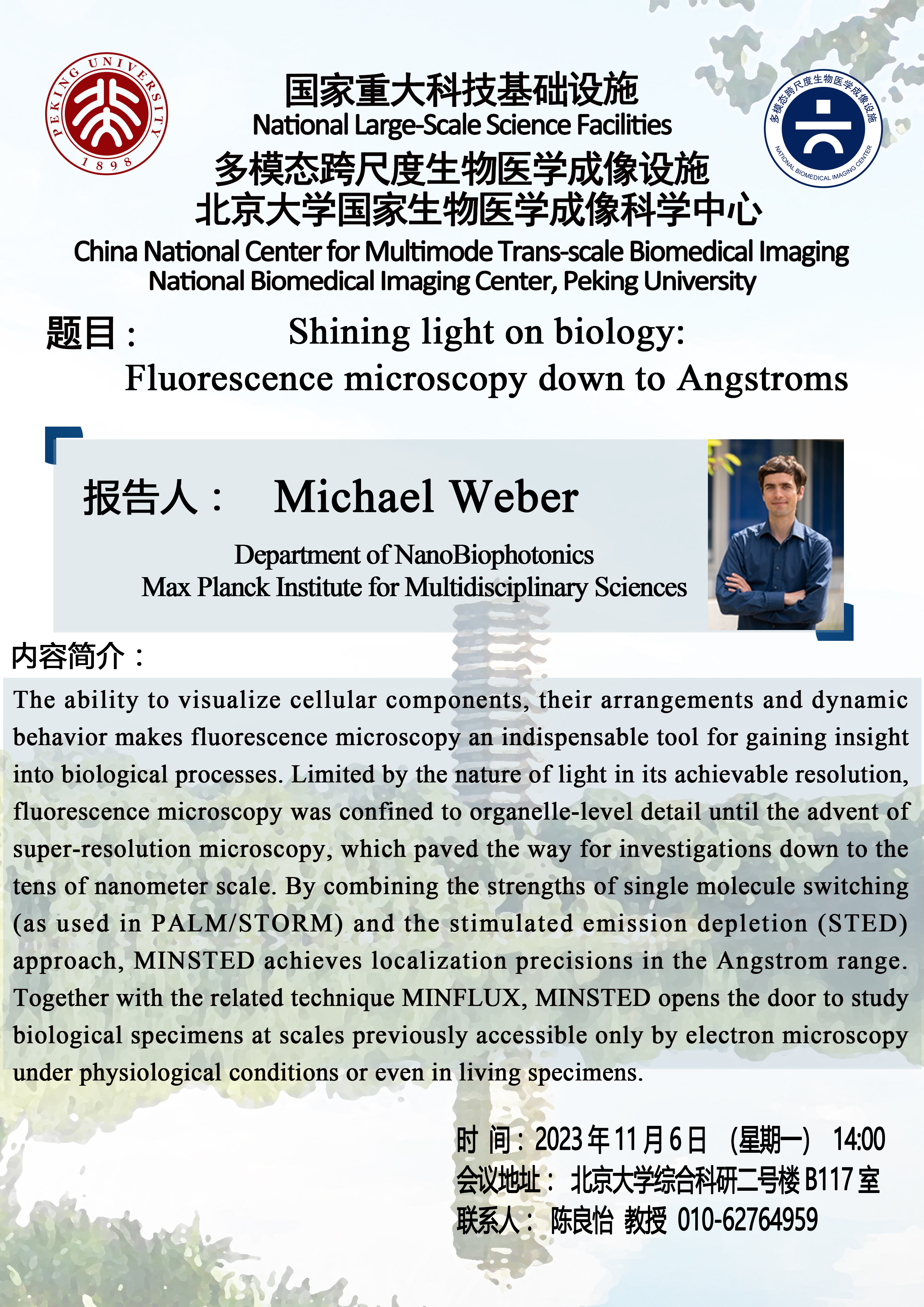Speaker: Michael Weber, Department of NanoBiophotonics, Max Planck nstitute for Multidisciplinary Sciences
Time: 14:00 p.m., November 6, 2023, GMT+8
Venue: No. 2 Comprehensive Building of Scientific Research Room B117
Abstract:
The ability to visualize cellular components, their arrangements and dynamic behavior makes fluorescence microscopy an indispensable tool for gaining insight into biological processes. Limited by the nature of light in its achievable resolution, fluorescence microscopy was confined to organelle-level detail until the advent oisuper-resolution microscopy, which paved the way for investigations down to the tens of nanometer scale. By combining the strengths of single molecule switching (as used in PALM/STORM) and the stimulated emission depletion (STED) approach,MINSTED achieves localization precisions in the Angstrom rangeTogether with the related technique MINFLUX, MINSTED opens the door to studybiological specimens at scales previously accessible only by electron microscopyunder physiological conditions or even in living specimens.
Source: China National Center for Multimode Trans-scale Biomedical lmaging National Biomedical lmaging Center, Peking University
